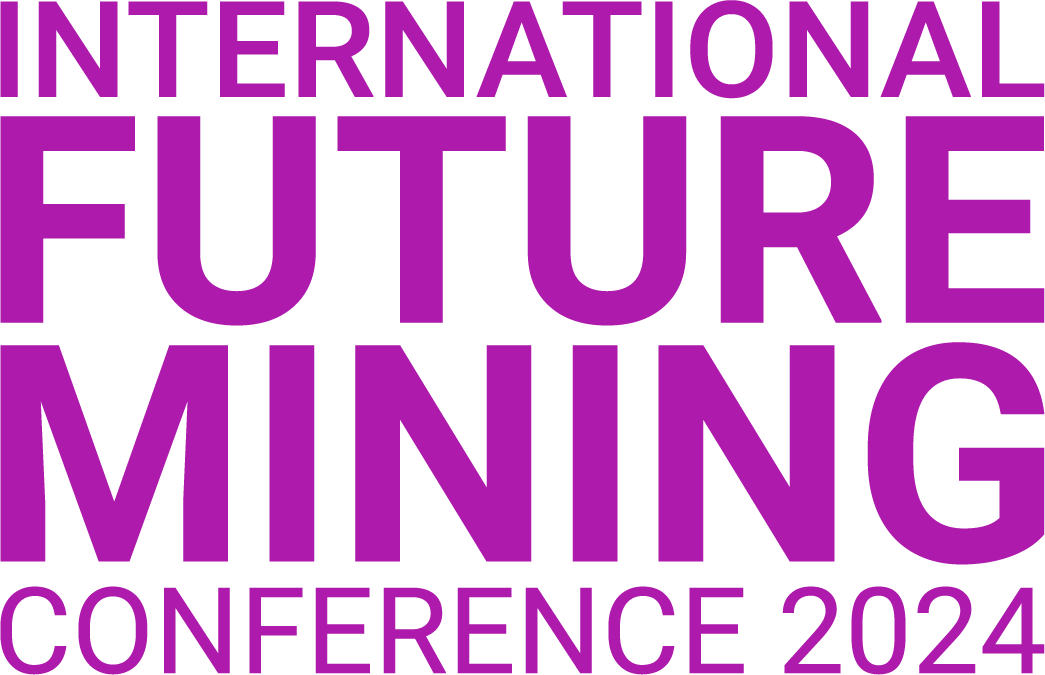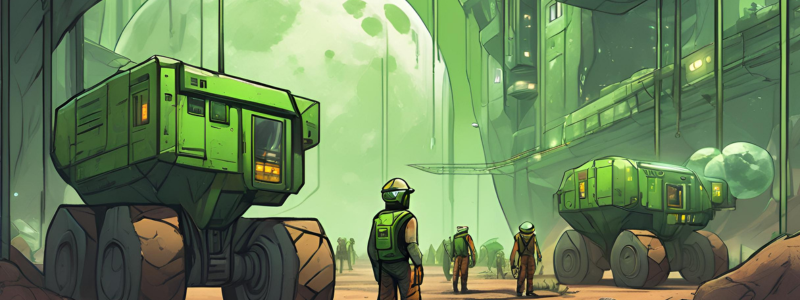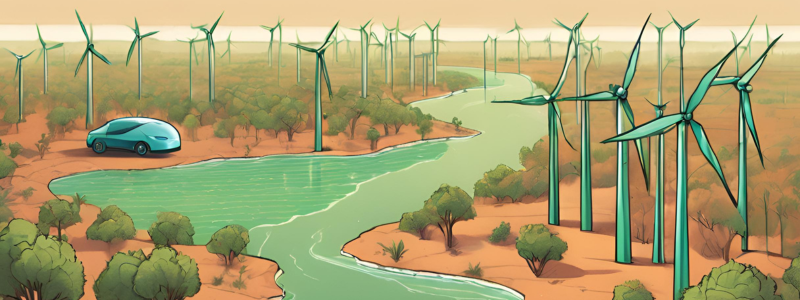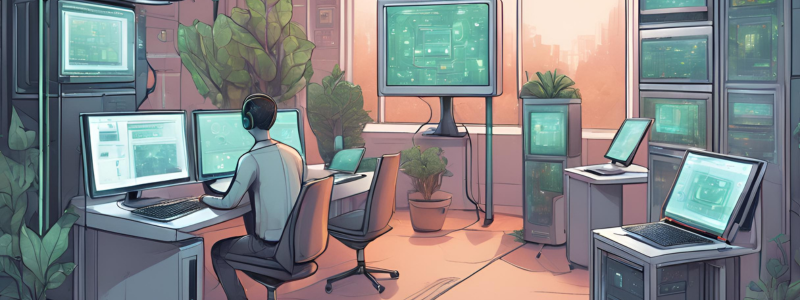Prof. Saydam's Top 8 Abstract Picks Defining the New Era in Mining
The International Future Mining Conference 2024, set to take place from 2-4 September in the vibrant city of Sydney, is set to pave the way for the next era of mining.
With themes focused on innovation, mining in extreme and unconventional environments, sustainable mining practices, energy innovations, and the future workforce, this notable conference aims to address the industry's most pressing challenges and opportunities.
Mining production is crucial for global socio-economic development, impacting almost every industry value chain. However, the sector faces significant hurdles, including sustained global demand for minerals, deeper orebodies, lower ore grades, extreme environmental conditions, and numerous social and environmental challenges. To navigate these complexities, the conference will serve as a platform for transforming scientific knowledge and advanced technologies from various disciplines into practical mining systems, ensuring operations remain cost-competitive, safe, and environmentally responsible.
Groundbreaking research to be presented
To gain deeper insights into the exceptional content of this year's conference, we spoke with Professor Serkan Saydam FAusIMM, Conference Chair and esteemed academic from the University of New South Wales. Prof. Saydam shared his thoughts on his top abstract picks, which he believes exemplify the groundbreaking research and innovative solutions that will be among the many papers presented at the upcoming conference this September.
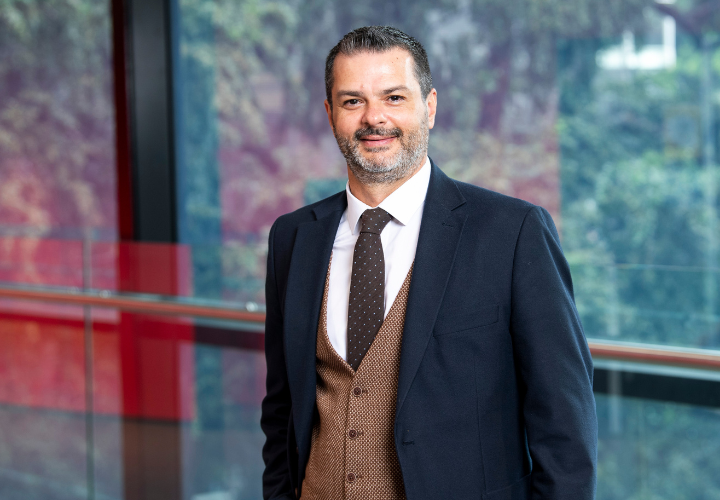
❝
I am very impressed by the high quality of the abstracts we received, particularly these seven, which stood out for their diversity, technical depth, innovation, and excitement. These selected works showcase advancements in areas such as multiphysics modelling inspired by space exploration, future scenarios for sustainable mining, inclusive future workforce, green mineral exports, critical mineral capabilities, leadership in decarbonisation, and cutting-edge digital technologies. Collectively, these abstracts highlight the dynamic and transformative potential within the mining industry, pointing towards a future that is both technologically advanced and environmentally responsible.
– Prof. Saydam, 2024
❞
Here are a few of the abstracts that particularly caught his attention:
1. Multiphysics Modeling and Virtual Motion Simulation to Optimise Mining Systems in Extreme Conditions - Insights from Mars Science Laboratory (MSL) Curiosity Rover
S - "Exploring innovative visualisation technology, inspired by the Mars Science Laboratory Curiosity Rover, this abstract touches on themes that could revolutionise mining system design. From space missions to terrestrial mining, MMVMS may help optimising components and predicting damage in extreme environments."
Read abstract 1
Abstract by Carlos Tapia
In the quest to access valuable critical minerals, humankind is expanding the frontier into extreme environments like space and deep-sea mining. These ambitious enterprises involve considerable costs and lengthy development cycles to ensure the robustness of mining systems in the face of the harshest conditions and unforeseen challenges. Unfortunately, obtaining information from these unexplored territories is complicated. Data is often scarce, incomplete or impossible to obtain until equipment is deployed, leaving engineers facing many uncertainties throughout the design, testing, production and preparation of such missions. Despite these challenges, these extreme environments operate under consistent physical and chemical principles that can be faithfully digitally replicated. However, unexplored areas and dynamic systems like weather and geology continue to carry uncertainties. While eliminating uncertainties remains elusive, Digital Twins offers a means of robust risk management tool. These virtual replicas can excel in simulating extreme conditions and unexpected events, helping optimise and validate mining system designs tailored for such hostile environments.
This study takes inspiration from the Mars Science Laboratory (MSL) Curiosity Rover's wheel damage rate to develop a Multiphysics Modeling and Virtual Motion Simulation (MMVMS) system. Using advanced Generative Design, this MMVMS system refines the MSL's design, simulates component and system performance, and assesses the risk of premature damage while operating on Mars. Additionally, MMVMS integrates cutting-edge CAD design technologies from aerospace and manufacturing to realistically recreate the Martian environment and a detailed representation of MSL, allowing mobility verification and validation simulation to test different components in terms of materials, design, weight, power and, therefore, cost. The research highlights the precision of MMVMS in replicating extreme conditions, simulating and evaluating internal and external variables influencing the entire system (rover) in real time, and predicting movements, failures, and premature damage. This sophisticated Digital Twin technology, showcased in this research, holds promise not only for space missions but also to be adapted for terrestrial and deep-sea mining operations.
2. A Day in the Life of a Mineworker in 2045
S - "I found this abstract particularly compelling as it explores how emerging technologies and economic trends are transforming mining into a sustainable, high-tech industry. It examines a future where AI, autonomous systems, and innovative mining methods create carbon-neutral, zero-entry mines that benefit both the environment and local communities, while offering a new, attractive lifestyle for mining professionals."
Read abstract 2
Abstract by Jarrod Bassan
By 2040, the world’s first carbon-neutral mines will be economically producing products that are vital for the world’s transition to renewable energy. After overcoming significant technical challenges (and the investment of significant capital), these mines have eliminated the use of diesel and other fossil fuels by introducing a wide range of new technologies to support decarbonisation, The leaders in this transition will be reaping the benefits of lower production costs, stable and predictable operations, and easier access to capital for their future projects. Some miners have failed in their attempt to decarbonise, offloading their assets to be acquired by more competent operators, or, in some cases, to indigenous or community-based enterprises with vested interest in making operations viable and sustainable. Regardless of ownership structure, all successful mining operations will have fostered strong and positive community relations that bring education, health, security and economic development opportunities to the communities while respecting their traditions, land-uses and culture. As shallow, easy to mine deposits become increasingly scarce, the majority of new mines are underground. Advancements in electric underground technology and the feasibility of ‘zero entry mining’ (no personnel in active mining zones) has made it increasingly possible to economically operate underground mines, even at shallow depths. The newest mines have a near zero footprint on the surface, produce no by-products, and are employing in-situ methods of extraction that are efficient and low impact. Surface land-uses, such as agriculture and renewable energy generation, continue in the immediate vicinity of the mine, with no significant ground disturbance, community impact or environmental footprint. Integrated and Remote Operations Centres (IROC) have been in use for almost 30 years, but their role has now changed significantly. Machine learning and optimisation algorithms are reliably running stable and predictable operations and continually adjust operational parameters to maximise value across the value chain. All equipment autonomously executes scheduled missions during normal operating periods, and the remote operations centre has become a ‘lights out’ centre that is only used to control operations during abnormal situations or emergency response... Continue reading here.
3. Experiences from developing a road map to attractive, inclusive, and safe mining workplaces
S - "Navigating the Future of Mining: Insights from the ‘Attract’ Project from Sweden”: This abstract reveals how a multidisciplinary research project on developing a roadmap to attractive, inclusive, and safe mining workplaces can shape the future mining workplace."
Read abstract 3
Abstract by Lena Abrahamsson
The aim with this paper is to discuss the possibilities, effects, and consequences of the green and digital transformation in the Swedish mining industry from workplace, socio-technical and gender equality perspectives. This discussion is based on preliminary results from the ongoing research project Attract: A roadmap to attractive, inclusive, and safe mining workplaces. One important part of the project is the applied approach where the researchers work together with two mining companies and one subcontractor company. The project includes a multidisciplinary research group of five senior researchers and five PhDstudents and a broad repertoire of methods, e.g., literature reviews, qualitative interviews with both managers and workers, workplace observations, workshops, surveys, and project seminars where the researchers and the company representatives together analyse the results. The project has two parallel main subprojects. The first one, The digital and green miner, is exploring how the implementation of autonomous technology will change the work for the miners and also what the mining work of the future will mean for workplace learning, competence development, and the possibilities to build attractive workplaces? The second one, GenSafe, is studying what prerequisites is needed in the workplace culture at multiemployer mine sites to develop a safe and inclusive mining culture. The preliminary results show that new complex situations are emerging in the mining industry’s work with electrification, circular material flows, digitalisation, and automation. Both the new technologies as well as the use of them affect and are affected by people and workplaces and the organisation of work, safety and learning. To support the functionality of the green and digital technology and at the same time develop inclusive, attractive, and safe workplaces there is a need of research that places people (all types of women and men) in the centre of technological development.
4. Australia’s Hydrogen Export in the form of Embedded Mineral Derivatives
S - "This abstract delves into how Australia's renewable energy and hydrogen potential can transform its mineral exports into 'Green Metals.' It can teach us about an innovative model for producing green copper, promising a sustainable and competitive future for Australia's mineral exports."
Read abstract 4
Abstract by Gabi Burge
Demand for green minerals is increasing, and the Australian mining sector is facing pressure to reduce emissions or risk a decline in export value. Exporting renewable hydrogen in the form of embedded mineral derivatives is an opportunity to both decarbonise the minerals sector and secure a pathway for Australian hydrogen to enter the global market. The Copper Value Chain Assessment Tool, a techno-economic model of the copper value chain, was developed and used to analyse a case study of copper production in Queensland. The case study found that currently, green copper produced with hydrogen at $8 /kg-H2 has a levelised cost of $9,704 /t. Compared to a fossil fuel derived product which costs $8,912 /t, green copper is not currently competitive. Sensitivity analysis of the cost inputs of copper found that hydrogen price is a significant driver of the high cost of green copper. To understand the impacts of hydrogen price, economic analysis of several scenarios of electricity, hydrogen and carbon credit prices predicted for 2030 was undertaken. It was found that when produced with hydrogen supplied at $2 /kg-H2, the levelised cost of green copper is equal to the fossil fuel product. And in a moderate to high carbon pricing environment ($54-79 /kg-CO2), $3 /kgH2 is sufficient for green copper to be economically viable. Therefore, it was demonstrated that the pathway for exporting renewable hydrogen in the form of embedded mineral derivatives must have a strong focus on decreasing hydrogen production costs. There has been industry interest in the developing the tool further and expanding it to accommodate other mineral derivate value chains. The outcome of this work would be an open-source tool that will allow stakeholders and other researchers to evaluate pathways for critical minerals and direct investment to the most impactful areas of the mineral value chain.
5. Data-driven visualisation for the development of mining digital twin
6. Towards a Mining Metaverse: Spatial Computing Meets Digital Twins for Remote Operations
S - "Both of these standout abstracts offer us an opportunity to immerse ourselves in the future of mining with presentations on cutting-edge digital technologies. We can discover how data-driven visualisation enhances mining digital twins for improved efficiency and decision-making. Additionally, explore the integration of XR and digital twins to create a mining metaverse, transforming remote operations to the next level.
Read abstract 5
Abstract by Ruiyu Liang
The integration of digital twins in mining represents a significant advancement towards enhancing operational efficiency and decision-making. Central to this development is the role of visualisation, a crucial element in mining digitalisation. This paper delves into the application of data-driven visualisation techniques in the construction of mining digital twins, highlighting how this innovation revolutionises the representation of physical mining environments. Initially, we assess the current landscape of digital twin technology in mining. We spotlight the shortcomings of conventional visualisation methods, particularly their inability to accurately depict complex underground environments and their predominantly historical orientation. To address these challenges, we propose a novel, data-driven approach. This approach extensively utilises CAD files, encompassing everything from geological surveys to intricate mine plans, thereby significantly elevating the precision of digital twins. It facilitates real-time updates and enables flexible interaction with a variety of data types. Our methodology introduces a comprehensive data diagram alongside the adaptation of a 3D tile index. This strategy ensures the efficient rendering of extensive mining environments, allowing for a more dynamic and interactive digital twin model. We discuss how this innovative approach not only enhances the accuracy of digital twins but also contributes to their adaptability and interactivity. In conclusion, the implementation of data-driven visualisation in the construction of mining digital twins marks a pivotal advancement in the industry's digital transformation. It promises a more detailed, accurate, and dynamic depiction of mining operations. This development is a harbinger for heightened safety, efficiency, and sustainability within the mining sector, setting a new standard for digital twin technology.
Read abstract 6
Abstract by Juncong Qu
Digital Twins (DTs) are transforming business operations across many industries through their accurate representations of physical entities enabled by IoT technologies. By integrating real-time data analytics and artificial intelligence, DTs can provide valuable insights for decision making, such as predicting failures before they occur, optimising processes, and enhancing performance which in turn, deliver tangible values to businesses around the world. DTs have been successfully applied in various sectors, such as manufacturing, aerospace, and the building industry, to transform their business operations and create competitive advantages in the face of the fourth industrial revolution. However, the minerals industry has not fully embraced the potential of digital twins, especially in terms of incorporating effective visualisation and intuitive user interaction designs to maximise the fidelity, usability, and scalability of cyber-physical systems. One promising way to address this gap is to leverage Extended Reality (XR) technologies, which enable immersive and interactive experiences in a virtual environment. XR can also facilitate the creation of an industrial metaverse for mining-related applications, where users can collaborate and perform real-world tasks in a shared, persistent virtual space from different locations. To demonstrate the feasibility and benefits of this approach, this work presents a proof of concept by developing and deploying a digital twin with real-time monitoring and control capabilities for a legacy ball mill operation, a common type of processing equipment used in the minerals industry. The paper also shows how XR can be used to guide the creation of a cyber-physical system for remote operation and crisis management using software platforms that are widely used in serious game developments.
7. In DATA, We Trust – Navigating through the age of A.I. in the Mining Industry.
S - "This abstract highlights how advanced IoT technologies could help transforming the mining sector. By leveraging advanced simulation models and operational data analysis, this paper addresses the challenges and solutions for improving AI prediction capabilities, ultimately optimising mining performance and identifying resource opportunities."
Read abstract 7
Abstract by Rajiv Chandramohan
The world is embracing a new form of industrial revolution – Industry 5.0; where machines enable humans to work faster and smarter by leveraging technologies like the Internet of Things, Big Data and Artificial Intelligence. Industry 5.0 builds upon the foundations of automation and efficiency established by Industry 4.0. The mining sector is a prime example of an industry rapidly adopting these tools to diagnose and analyse mining data; identifying resource opportunities, and optimizing performance.
The accessibility and analysis of extensive datasets have seen a significant increase, facilitated by custom sensors and powerful computing capabilities that provide valuable insights and operational guidance. These insights result from a combination of detailed simulation models (digital twins) and the analysis of operational data. Like any process model, understanding the process, equipment operation, and subsequent performance evolves through model development, experimentation, and benchmarking against similar operations. Despite the pragmatic and logical approach to analysis, the selection of the process flowsheet and equipment performance is heavily influenced by the available data obtained during the early project development phase and ongoing operation.
One of the key challenges to training the algorithms in the machine learning models is the availability of good data representing the ore body and reliance on working instrumentation that is properly calibrated to provide the correct process outputs. The mining block is a statistical inference based on the spatial location and orientation of the drilled core samples, while standard instrumentation is susceptible to drift or errors in data due to the demanding process conditions.
This paper explores the challenges of developing advanced Artificial Intelligence algorithms and the key areas and approaches taken to improve their prediction capabilities. It offers practical solutions to enhance predictability through various simulation techniques grounded in a broad metallurgical understanding of the process and mine development.
8. Using Machine Learning to make smarter screening media maintenance decisions
S - "The WearApp project stands out as a prime example of how machine learning can revolutionize screening media maintenance. By leveraging deep learning models, WearApp offers a user-friendly solution for assessing the degradation of screening media panels, enabling more informed and efficient maintenance decisions through detailed analysis and visualisation."
Read abstract 8
Abstract by Matt Cutbush
WearApp provides expertise for assessing the degradation of removable screening media panels on vibrating screens right in a user’s pocket. Through the WearApp application, users can simply take a picture of a panel using their mobile, enter some basic information and have the application assess the wear to provide a recommendation for whether the panel needs to be replaced. Where traditional mechanisms for assessing panel wear only measure a few points across the panel face and rely on having personnel with specialised knowledge available to perform the assessment, WearApp uses machine learning models to analyse the entire panel face and support the user to make an informed decision. The application works through analysing a panel image and using a model to automatically detect the corners of the panel. Given the known dimensions of the panel, this enables the application to calibrate the pixel size against a known reference. A second set of models then detect the apertures and measure their dimensions. With the aperture dimensions defined the application assesses the wear of the panel through referencing a stored 3D model of the aperture. Finally, the data from each aperture is collated and the wear of the entire panel face defined. Because WearApp performs measurement of the entire panel face, it also allows the user to perform a more detailed analysis of the panel’s wear profile. Where typically, the panel wear is only measured in a few locations, WearApp’s analysis enables users to visualise the panel wear across the entire panel face, identifying areas of high wear that could be leading to premature panel replacement. Additionally, because the entire panel face is measured the change in screening efficiency can be calculated accurately for the worn panel, even taking into account the impact of aperture pegging by small rocks.
